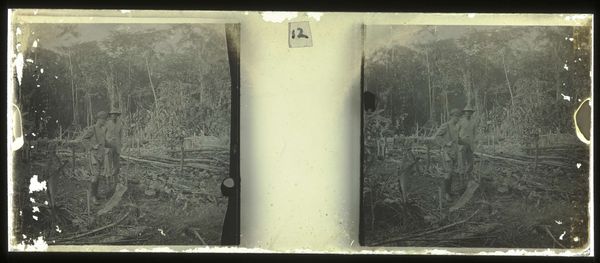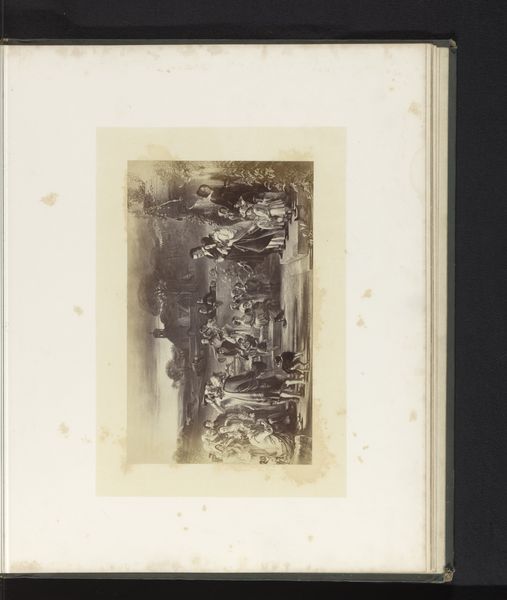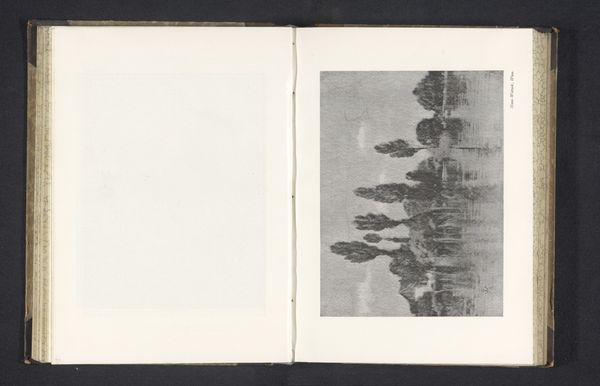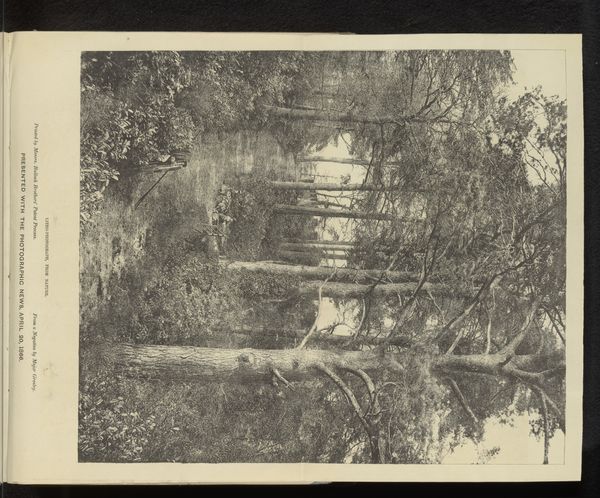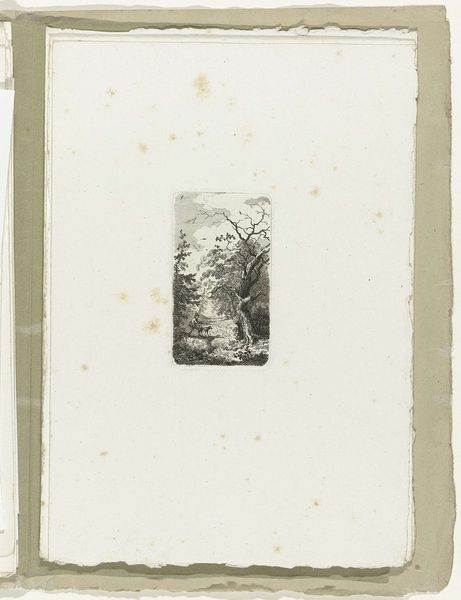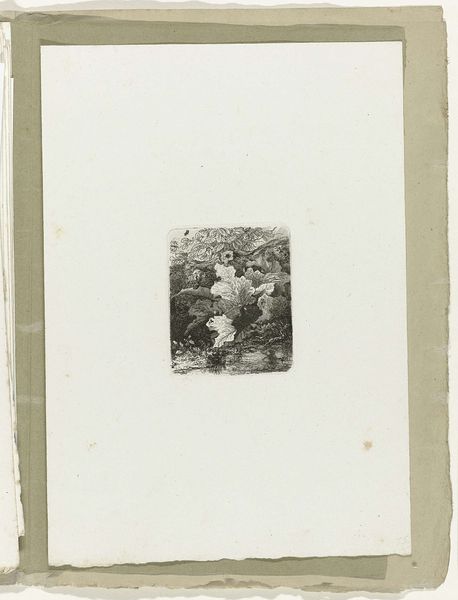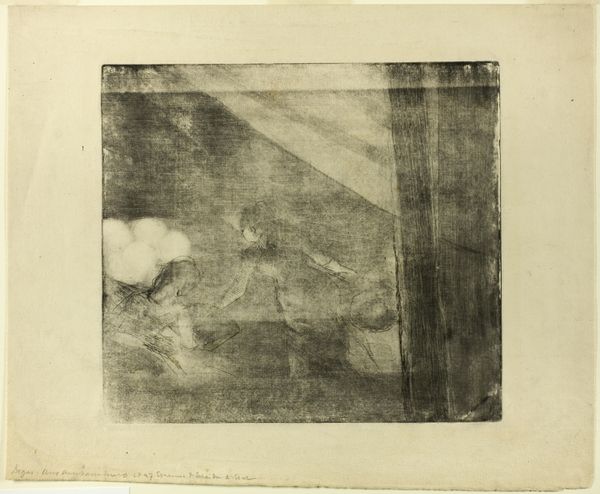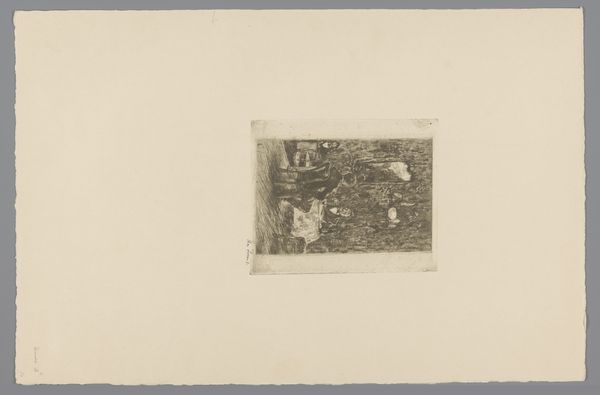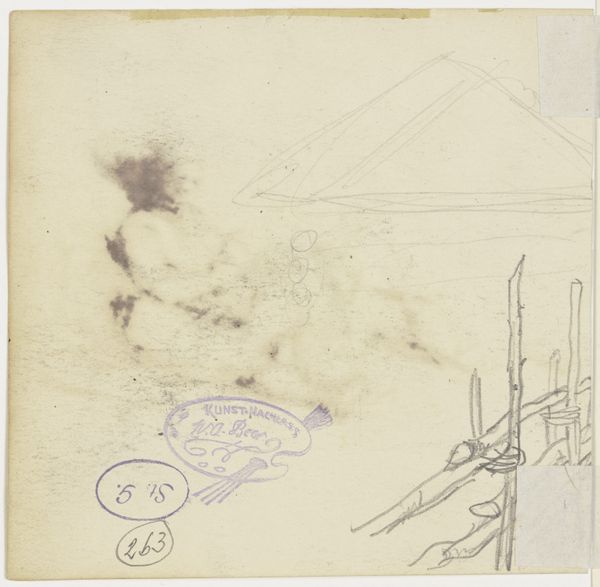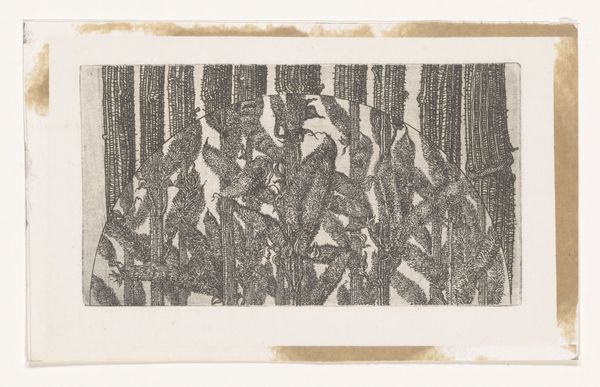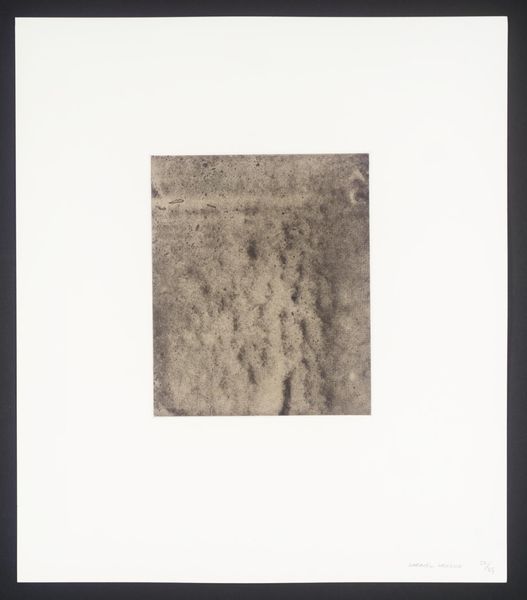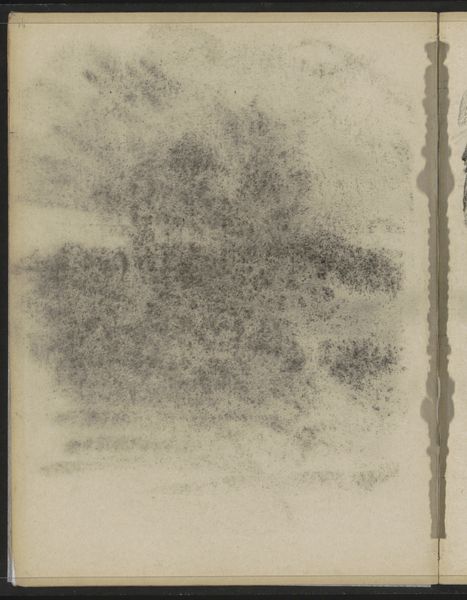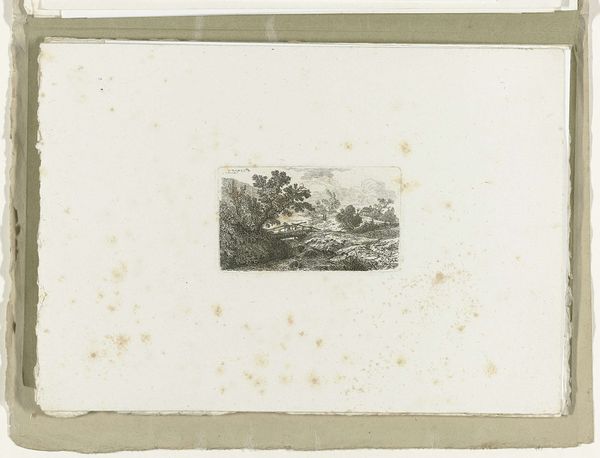
Copyright: Rijks Museum: Open Domain
Curator: What we're looking at is titled "Schilderij op een ezel," or "Painting on an Easel," by George Hendrik Breitner, likely created sometime between 1885 and 1898. It resides here at the Rijksmuseum. Editor: My immediate impression is…mist. An opaque vision emerges from the gloom. I feel like I'm seeing a memory half-formed, a half-recalled dream hovering in shades of gray. What's happening here? Curator: Well, it's interesting that you mention memory. Breitner was fascinated with capturing fleeting moments, cityscapes and impressions from daily life. But it is crucial to know that, Breitner worked a lot "en plein air", or simply outdoors, painting directly on the scene. His paintings capture that same spontaneous energy you get with photography and print which he combined in this particular artwork. Editor: Absolutely, and even though it's captured with oil paints with clear visible impasto it almost anticipates the photographic snapshot. This interest for movement can be seen throughout his depictions of Amsterdam. But let’s talk more about symbols. The visible easel is, as a structure, holding an "idea", perhaps about making art. Curator: Precisely! The very subject of the painting reflects upon itself, it's about the artistic process. The muted palette perhaps echoes the gritty realism Breitner championed in representing urban life. The visible "roughness" in material could suggest a search for an authentic, unvarnished perspective. What do you feel it all brings together, personally? Editor: Well, the painting is interesting precisely because it reminds us that, just like this captured outdoor impression, even memory can be layered with new interpretations with each passing viewing. The act of painting in the open, then the photograph documenting it... all feels intensely… well, “meta” now. Curator: It also makes me think of our connection to the past. The photograph carries a different kind of immediacy from the landscape on the easel. Editor: True! All in all, it creates a fascinating dialogue across media.
Comments
No comments
Be the first to comment and join the conversation on the ultimate creative platform.
